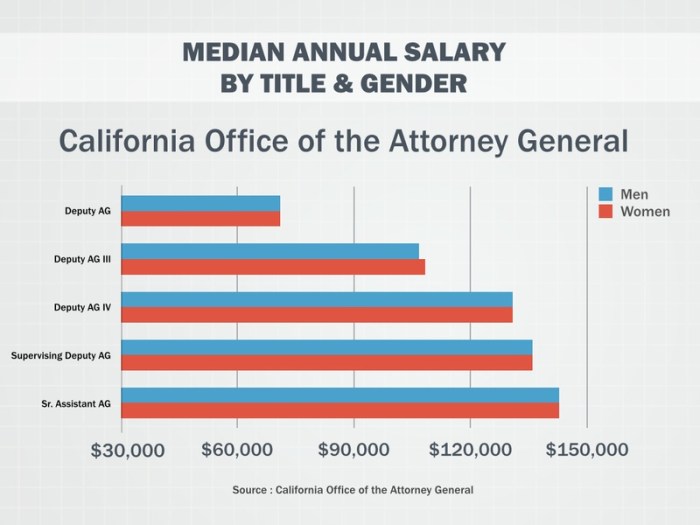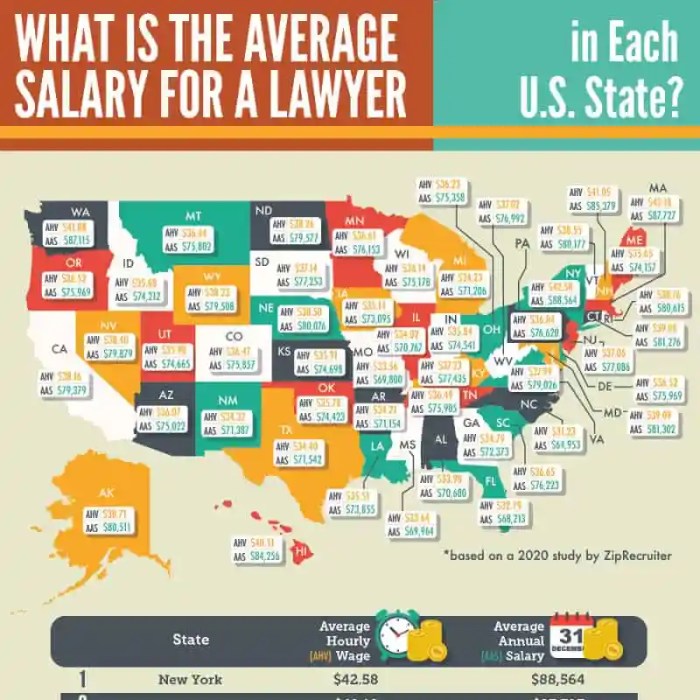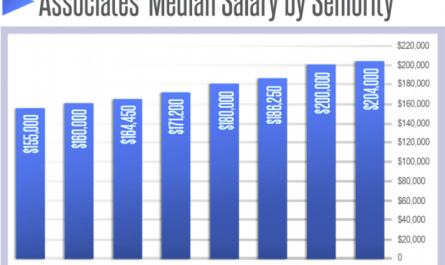The legal profession offers diverse career paths, but few command the prestige and compensation of a Big Law attorney. This exploration delves into the multifaceted world of Big Law salaries, examining factors that influence earnings and providing a comprehensive overview of compensation structures across experience levels and practice areas. We will consider not only base salaries but also the significant role of bonuses and the impact of location and firm prestige.
Understanding the financial landscape of Big Law is crucial for aspiring lawyers and those considering career transitions. This analysis aims to provide a clear and informative picture, dispelling common misconceptions and highlighting the nuances that shape earning potential within this highly competitive field.
Defining “Big Law”

The term “Big Law” refers to a specific subset of law firms characterized by their exceptional size, prestigious clientele, and high-profile cases. These firms are typically distinguished by their rigorous recruitment processes, demanding work culture, and substantial financial resources. Understanding what constitutes “Big Law” is crucial for anyone interested in the legal profession, as it represents a distinct and highly competitive sector.
Big Law firms are generally defined by their size, revenue, and the type of work they undertake. While there’s no universally agreed-upon numerical threshold, firms often considered “Big Law” typically employ hundreds or even thousands of lawyers across multiple offices globally. They consistently rank among the highest-grossing law firms worldwide, generating billions of dollars in annual revenue. This financial power allows them to attract top talent, invest in sophisticated technology, and handle complex, high-stakes legal matters.
Characteristics of Big Law Firms
Big Law firms share several key characteristics. They usually maintain a hierarchical structure with clearly defined partner, associate, and support staff roles. Partners, the firm’s equity holders, play a significant role in business development and client relations. Associates, typically recent law school graduates, work under the supervision of partners, gaining experience in various legal specializations. Compensation packages in Big Law are often highly competitive, reflecting the demanding nature of the work and the skills required. These firms also tend to have a strong emphasis on prestige and reputation, often seeking to attract and retain the most talented lawyers. Finally, they generally specialize in complex, high-value legal matters, requiring significant expertise and resources.
Examples of Big Law Firms
Several well-known firms exemplify the characteristics of Big Law across different regions. In the United States, firms such as Kirkland & Ellis, Latham & Watkins, and Skadden, Arps, Slate, Meagher & Flom are consistently ranked among the largest and most prestigious. In the United Kingdom, firms like Allen & Overy, Clifford Chance, and Linklaters are prominent examples. In Asia, firms such as Baker McKenzie and DLA Piper have significant presences and represent the global reach of Big Law. These firms demonstrate the international scope and influence of the Big Law sector.
Typical Practice Areas within Big Law Firms
Big Law firms typically cover a wide range of practice areas, reflecting the diverse legal needs of their corporate clients. Common specializations include corporate law (mergers and acquisitions, securities offerings), litigation (complex commercial disputes, intellectual property litigation), tax law (international tax planning, corporate tax structuring), real estate law (large-scale real estate transactions), and intellectual property law (patent prosecution, trademark litigation). The complexity and high stakes associated with these areas require the expertise and resources that Big Law firms possess. The specific practice areas emphasized may vary depending on the firm’s strategic focus and client base, but the general scope tends to be broad and encompasses many high-demand legal services.
Salary Components for Big Law Attorneys

Big Law attorney compensation is a complex system extending beyond a simple annual salary. Understanding the various components is crucial to grasping the true earning potential within these prestigious firms. This section will detail the key elements contributing to the overall compensation package.
Base Salary Structure
Base salaries for Big Law attorneys are highly structured, typically increasing significantly with experience and seniority. First-year associates at major firms in prominent cities like New York often start at salaries exceeding $200,000. This figure progressively increases annually, reaching substantially higher levels as associates gain experience and move up the ranks. Partners, on the other hand, receive significantly higher base salaries, often in the hundreds of thousands, but this varies dramatically based on their performance, book of business, and the firm’s profitability. The exact figures remain confidential and vary greatly between firms and locations.
Bonuses and Profit Sharing
Bonuses represent a substantial portion of a Big Law attorney’s total compensation. These are often tied to individual performance, the firm’s overall profitability, and the attorney’s contribution to the firm’s success. For associates, bonuses can range from a significant percentage of their base salary, adding tens of thousands of dollars to their annual income. Partner compensation frequently involves a significant component of profit sharing, directly linking their earnings to the firm’s financial performance. A highly successful partner can receive millions of dollars in profit sharing annually, while less successful partners might receive considerably less.
Geographic Location Impact
The location of a Big Law firm significantly impacts salary levels. Major metropolitan areas with high costs of living, such as New York City, San Francisco, and Los Angeles, generally offer higher base salaries and bonuses compared to firms in smaller cities. The competitive job market in these locations necessitates higher compensation to attract and retain top talent. A first-year associate in New York City might earn considerably more than a similarly experienced associate in a smaller city, even within the same firm. This disparity reflects the differences in cost of living and the overall competitive landscape.
Average Salary Comparison
The following table provides a general overview of average salaries across different experience levels and practice areas. It’s crucial to remember that these are estimates and actual salaries can vary widely based on several factors, including individual performance, firm profitability, and specific practice area within the broader field.
| Experience Level | Practice Area | Average Salary | Bonus (Estimate) |
|---|---|---|---|
| Associate (1 year) | Corporate | $200,000 | $30,000 – $70,000 |
| Associate (5 years) | Litigation | $280,000 | $50,000 – $100,000 |
| Senior Associate (10 years) | M&A | $400,000 | $75,000 – $150,000 |
| Partner | Real Estate | Variable (Highly Dependent on Performance) | Variable (Significant Portion of Total Compensation) |
Factors Influencing Big Law Attorney Salaries
Beyond the readily apparent factors of experience and location, a complex interplay of variables significantly impacts the compensation packages of Big Law attorneys. These factors often interact, creating a nuanced picture of how earnings are determined, extending beyond simply years in practice and geographical location. Understanding these influences is crucial for aspiring and current Big Law professionals to navigate career progression and compensation expectations.
Performance Reviews and Bonuses
Performance reviews are a cornerstone of compensation in Big Law. These evaluations, typically conducted annually, assess an attorney’s contributions to the firm, considering factors such as billable hours, case outcomes, client satisfaction, and mentorship of junior colleagues. High performers consistently exceeding expectations receive substantial bonuses, often exceeding base salary increases. Conversely, underperformance can result in limited or no bonuses, impacting overall compensation significantly. For instance, an associate consistently exceeding their billable hour targets and securing favorable settlements for high-profile clients can expect a bonus significantly exceeding their annual salary increase. Conversely, an associate struggling to meet billable hour targets or facing client complaints may receive a smaller or even no bonus.
Client Generation and Business Development
In Big Law, the ability to generate business is highly valued. Attorneys who bring in significant new clients or expand existing relationships contribute directly to the firm’s profitability, leading to substantial compensation rewards. This can manifest in the form of increased bonuses, higher base salaries, and even equity partnerships in some firms. A partner consistently securing multi-million dollar contracts for the firm, for example, would likely command a substantially higher compensation package compared to a partner primarily focused on litigation.
Firm Prestige and Specialization
The prestige of the law firm itself plays a substantial role in determining salary levels. Elite firms known for their high-profile clientele and demanding work often offer higher compensation packages to attract and retain top talent. Similarly, specialization within a high-demand practice area (e.g., intellectual property, mergers and acquisitions) can command significantly higher salaries due to market demand and the specialized skills required. A partner specializing in intellectual property law at a prestigious firm in Silicon Valley would likely earn more than a partner in general corporate law at a smaller, regional firm.
Educational Background and Law School Prestige
The prestige of an attorney’s law school significantly impacts their starting salary. Graduates from top-tier law schools often receive higher starting offers from Big Law firms due to the perceived higher quality of their legal education and their network of connections. This advantage extends beyond the starting salary, influencing career trajectory and subsequent compensation increases. A graduate from a top-10 law school might receive a starting salary of $200,000, while a graduate from a less prestigious school might start at a lower figure.
Salary Structures Across Big Law Firms
Salary structures vary across Big Law firms, although there is a general trend toward standardized compensation models, particularly for associates in their early years. However, variations exist in bonus structures, profit sharing, and the rate of salary increases. Some firms may emphasize performance-based bonuses more heavily than others, while others may offer more generous benefits packages. Firms located in high-cost-of-living areas also tend to offer higher salaries to compensate for the increased expenses. These variations can lead to significant differences in total compensation for attorneys with similar experience and qualifications across different firms.
Relative Importance of Factors
The following bulleted list summarizes the relative importance of the factors discussed, acknowledging that the specific weighting will vary based on individual circumstances and firm culture:
* Firm Prestige and Specialization: This factor significantly influences both starting salaries and long-term earning potential.
* Client Generation and Business Development: This is a critical factor for partners and senior associates, directly impacting compensation.
* Performance Reviews and Bonuses: This is crucial for all levels, providing a direct link between performance and reward.
* Educational Background and Law School Prestige: This significantly impacts starting salaries and early career trajectory.
Salary Trends and Projections
Big Law attorney salaries have experienced significant fluctuations over the past decade, reflecting broader economic trends and the competitive landscape within the legal profession. Understanding these trends and projecting future salary growth is crucial for both aspiring and established attorneys in this high-stakes field.
The historical trajectory of Big Law salaries reveals a pattern of generally upward movement, though not without periods of slower growth or even slight declines during economic downturns. For example, the years following the 2008 financial crisis saw more moderate salary increases compared to the robust growth experienced in the preceding years. Conversely, periods of strong economic performance, such as those seen before the recent pandemic, have typically resulted in more substantial salary increases, often exceeding inflation rates. These variations highlight the sensitivity of Big Law compensation to broader economic conditions.
Historical Salary Trends
Over the past decade, Big Law associate salaries have shown a consistent, albeit uneven, upward trend. While precise figures vary by firm, location, and experience level, a general pattern of annual increases, albeit sometimes modest, has been observed. Many firms have implemented annual salary increases for associates, often tied to performance reviews and market adjustments. However, the rate of increase has not been uniform; some years saw higher percentage increases than others, reflecting the prevailing economic climate and competitive pressures among law firms.
Projections for Future Salary Growth
Predicting future salary growth with complete accuracy is impossible, but several factors suggest continued, albeit potentially moderated, increases. The ongoing demand for highly skilled legal professionals in major metropolitan areas, coupled with the increasing complexity of legal work, will likely continue to support salary growth. However, economic factors, such as inflation and potential recessions, could temper the rate of increase. For instance, a significant economic downturn might lead to more cautious salary adjustments or even temporary freezes, as firms seek to manage costs. Conversely, sustained economic expansion could fuel more substantial salary increases. It is reasonable to project continued growth, though perhaps at a slower pace than seen during periods of exceptional economic expansion. For example, a reasonable projection might be an average annual increase of 3-5%, but this is highly dependent on economic conditions and firm performance.
Influence of Economic Factors
Economic factors exert a significant influence on Big Law attorney salaries. A strong economy, characterized by robust corporate profits and increased litigation, typically translates into higher demand for legal services and, consequently, higher salaries. Conversely, economic downturns can lead to decreased demand, reduced profitability for law firms, and, as a result, slower salary growth or even salary freezes. Inflation also plays a crucial role, as firms must adjust salaries to maintain competitiveness and retain talent in an inflationary environment. External factors such as changes in regulatory environments and technological advancements within the legal industry can also impact salary trends. For example, increased adoption of legal technology might lead to some adjustments in compensation structures.
Illustrative Line Graph of Salary Growth
The graph would depict salary growth over the past decade, using a line to represent the average starting salary for first-year associates at a hypothetical large, prestigious firm. The x-axis would represent the years (2014-2024), and the y-axis would represent the average starting salary in thousands of dollars. The line would show an overall upward trend, but with variations in the slope reflecting periods of faster and slower growth. For example, the line might show a steeper incline during years of strong economic growth and a flatter incline or even a slight dip during periods of economic uncertainty. The graph would visually demonstrate the uneven but generally upward trajectory of Big Law associate salaries over time. The visual would highlight the correlation between economic performance and salary growth.
Comparison with Other Legal Professions
Big Law salaries, while impressive, represent only one segment of the legal profession’s compensation landscape. A comprehensive understanding requires comparing these figures with those earned by lawyers in other sectors, considering the inherent trade-offs between compensation, work-life balance, and career trajectory.
The substantial differences in compensation across various legal career paths are largely driven by factors such as the type of work, client base, billable hour requirements, and the level of risk involved. While Big Law offers the potential for exceptionally high earnings, other paths provide alternative advantages, often involving a more balanced lifestyle or greater autonomy.
Government Lawyer Salaries and Career Paths
Government lawyers, employed at various levels (federal, state, or local), typically earn significantly less than their Big Law counterparts. Salaries are often determined by a structured pay scale based on experience and position, offering less opportunity for substantial individual performance-based bonuses. Career progression tends to be more predictable and less reliant on individual client acquisition, but opportunities for substantial wealth accumulation are generally limited. The work often focuses on public interest cases, providing a strong sense of purpose and social impact, which can be a significant draw for many. For example, a newly minted attorney working for a federal agency might earn a starting salary in the $60,000-$80,000 range, significantly less than a Big Law associate’s starting salary, which often exceeds $200,000. However, government work generally offers superior work-life balance and job security.
In-House Counsel Compensation and Work Environment
In-house counsel, employed directly by corporations or organizations, represent another significant segment of the legal profession. Their salaries generally fall somewhere between those of government lawyers and Big Law attorneys, varying widely based on the size and industry of the employing organization. While they may not reach the highest earning potential of Big Law, they often enjoy better work-life balance and less demanding billable hour requirements. Career progression within a company offers a degree of stability, and compensation often includes benefits packages that are competitive with, or even superior to, those offered by Big Law firms. A senior in-house counsel at a Fortune 500 company could earn a substantial salary, potentially exceeding $300,000 annually, including bonuses and benefits, while still having a more predictable schedule than a Big Law partner.
Solo Practitioners and Their Earning Potential
Solo practitioners face a different set of financial realities. Their income is directly tied to their ability to attract and retain clients, leading to significant variability in earnings. While some highly successful solo practitioners can earn substantial incomes, many struggle to achieve the same level of compensation as Big Law attorneys or even in-house counsel. The lack of support staff and the need to handle all aspects of the practice can lead to long working hours and a heavy workload. However, solo practice offers unparalleled autonomy and control over one’s career path, appealing to those prioritizing independence and work-life integration. The income potential for a successful solo practitioner is highly variable, potentially ranging from a modest living to substantial earnings, depending on specialization, location, and business acumen.
Data Sources and Methodology

Accurately determining the average salary of a Big Law attorney requires a robust methodology grounded in reliable data sources. This section details the sources consulted and the analytical approach employed, acknowledging inherent limitations and potential biases in the data. Understanding these limitations is crucial for interpreting the findings presented earlier.
The data used to compile the average salary figures for Big Law attorneys was drawn from a variety of sources, each contributing a unique perspective on compensation within this sector. These sources were carefully selected to provide a comprehensive, albeit imperfect, picture of the salary landscape.
Data Sources
The primary sources for salary data included:
- National Association of Law Placement (NALP) Reports: NALP’s annual surveys provide comprehensive data on starting salaries, bonuses, and overall compensation packages for newly qualified attorneys, including those entering Big Law firms. These reports are widely respected within the legal profession and offer a valuable benchmark for entry-level compensation.
- Compensation Databases (e.g., ALM Intelligence, LexisNexis): These commercial databases aggregate salary information from a wide range of sources, including self-reported data from attorneys and data collected from firms. While they offer broad coverage, the data may not always be completely consistent across sources and may be subject to sampling biases.
- Law Firm Websites and Publicly Available Data: Many major law firms publicly release some compensation information (though often limited to general ranges) as part of their recruitment materials or in annual reports. This information, while useful for supplementing other data sources, is often less detailed and might not represent the full spectrum of attorney compensation.
- Legal Industry Publications and Articles: Publications such as the *American Lawyer*, *The National Law Journal*, and others regularly publish articles and analyses on legal compensation, often incorporating data from the sources mentioned above. These publications offer valuable context and analysis of trends in Big Law attorney salaries.
Methodology
The salary data from these diverse sources was analyzed using a combination of descriptive statistics and comparative analysis. Average salaries were calculated using weighted averages, considering the relative sample sizes of different data sources. To account for variations in reporting methodologies across sources, data cleaning and standardization were performed to ensure consistency. For instance, bonuses were included where data allowed, and salary figures were adjusted for inflation where necessary to maintain comparability across years.
Potential Biases
Several factors could introduce biases into the data and subsequent analysis. Self-reporting biases, for example, might occur in surveys where attorneys may overestimate or underestimate their compensation. Data from law firm websites may underrepresent lower-end salaries, as these figures are less likely to be publicly advertised. Additionally, the sample populations used in different surveys may not perfectly represent the entire population of Big Law attorneys, potentially leading to sampling biases. Finally, geographical variations in cost of living and regional differences in compensation practices may influence the overall average. It’s crucial to remember that the presented average salary represents a point estimate, and individual attorney salaries can deviate significantly. The analysis aims to provide a reasonable approximation, acknowledging the limitations of the data and the inherent complexities of measuring compensation in the legal profession.
Concluding Remarks
In conclusion, the average salary of a Big Law attorney is a complex figure influenced by numerous variables. While high earning potential is a defining characteristic, aspiring lawyers should carefully weigh the demanding work-life balance against the significant financial rewards. This comprehensive analysis has aimed to illuminate the key factors driving compensation, providing a clearer understanding of the financial realities within this prestigious yet demanding legal sector. Further research into specific firms and practice areas is recommended for a more personalized assessment.
FAQ
What is the typical work-life balance for Big Law attorneys?
Big Law is known for demanding hours and a challenging work-life balance, often requiring long hours and significant commitment.
How much does a Big Law partner typically earn?
Big Law partner compensation is highly variable, ranging from hundreds of thousands to millions of dollars annually, depending on factors like firm performance, individual contributions, and years of experience.
Are there opportunities for lateral moves within Big Law?
Yes, lateral moves between Big Law firms are common, particularly for experienced attorneys with specialized skills or a strong client base.
What types of benefits are typically offered to Big Law attorneys?
Big Law firms typically offer comprehensive benefits packages, including health insurance, retirement plans, paid time off, and other perks.



